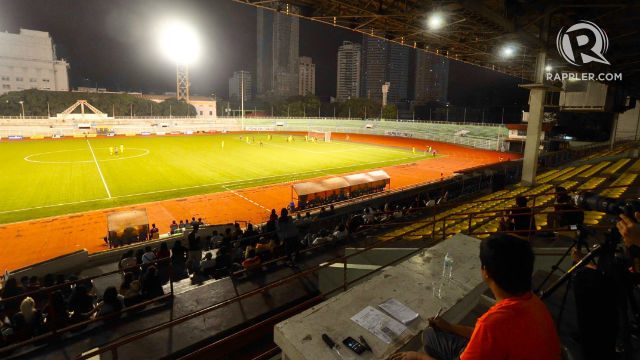SUMMARY
This is AI generated summarization, which may have errors. For context, always refer to the full article.

MANILA, Philippines (UPDATED) – After reports circulated that Rizal Memorial Sports Complex was to be converted into a commercial center as planned by the government of Manila, athletes and heritage advocates alike can now heave a sigh of relief as the sports complex will remain as it is.
The proposed selling of the pre-war sports mecca to a developer has been stopped thanks to a ruling by the National Historical Commission of the Philippines (NHCP), declaring the sports complex as a national historical landmark. Because of this, the stadium, which was built back in 1934, will be prohibited from orders of demolition or conversion.
A copy of the resolution was published on the official Facebook page of the National Committee on Monuments and Sites on Tuesday, April 18. (READ: Is Rizal Memorial really set for the wrecking ball?)
In Resolution no. 5 approved by board members last March 27, NHCP and the National Museum identified the sports complex as an “important cultural property.” It further listed the complex’s lengthy contributions to the development of Philippine sports, including its hosting of the Far Eastern Championship Games as well as other renowned local and international tournaments.
The resolution likewise regarded the landmark as a significant chunk of the country’s history, as it was formerly utilized as a Japanese fort during World War II.
Following its renovation in 1953, the sports complex served as a venue for various sporting, entertainment, religious and other social events.

The ruling also noted that the Rizal Stadium itself was “designed by Juan Arellano of the Bureau of Public Works [and is] significant for its Art Deco Style of architecture with features such as curving walls, double band of moldings and beveled corners with nail head ornaments.”
The NHCP resolution was signed by Chairman Rene Escalante, together with board members Abraham P. Sakili, Victorino Mapa Manalo, Yolanda E. Jacinto, Jeremy Barns and Ludovico Badoy.
The National Museum, which is headed by Barns, had earlier declared the memorial complex as “Important Cultural Properties” via the Museum Declaration No. 13-2016 last December.
The group of port and gaming tycoon Enrique Razon Jr. had earlier proposed to redevelop and modernize the 82-year-old Rizal Memorial Sports Complex.
The Razon group had said that in their proposal they intended to maintain the stadium’s facade and walls. They wanted to redevelop the area, and not convert it into a mall as initially reported.
After destruction during World War II, and reconstruction in 1953, the Rizal Memorial Stadium was renovated in 2011.
Managed by the Philippine Sports Commission (PSC), Rizal Stadium is owned by the city of Manila, which has had no income from it, leaving the city with no funds to modernize the facility . (READ: The bells toll for the Rizal Memorial)-with reports from Chrisee Dela Paz/Rappler.com
Add a comment
How does this make you feel?
There are no comments yet. Add your comment to start the conversation.